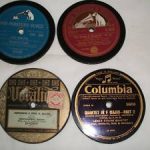We may receive a commission when you use our affiliate links. However, this does not impact our recommendations.
Time for a show of hands. Have you ever said, “I can’t cut curves because I don’t have a band saw, a jig saw or an oscillating spindle sander?” If so, here’s a solution that involves an unsung hero of the hand-tool world, the coping saw. Coping saws offer a tremendous bang for your buck. Twelve dollars for the saw and a few more for a package of blades and you’re set. At that price you don’t have much of an excuse for not having one, and in addition to making curved cuts, you can use it to clean out the waste in between your dovetails.

The blade will fit with the teeth pointing either way, so you can cut on the push stroke or when you pull. I think it makes sense to cut on the pull, as that puts tension on the blade. The blades are thin and will bend, and are more likely to do that if you’re pushing.

Clamp the work so it’s steady, and mark your layout on both sides if you’re nervous about not cutting straight. Stay outside the line and see how you do. I’m showing off here by cutting pretty close; on the other curve I chickened out and stayed farther away. Don’t try to force things; watch the saw cut rather than try to make the saw cut.

It doesn’t matter how raggedy your cut looks, as long as you stay outside the line. Clamp the block down to something solid and pare down the parts that stick out with the chisel held vertically. This isn’t hard to do; you’re only slicing off the high points. This will leave a faceted surface, and the more facets you have the closer to a fair curve you will be.

When you get close to the line, move the block so the edge is out in space and re-clamp it. To finish the curve, you want to pare downhill to the grain. To establish the curve, angle the chisel slightly so that you are only cutting a narrow portion of the width. This makes it easy to neatly follow the curve. Do this on both sides, then make paring cuts down the middle to reach the edges. In the picture above, the shaving stops about 1/16″ in from the edges because I cut the edges first.

To cut the concave arc, you’ll need to change the angle of the blade in relation to the frame of the saw, and you’ll need to work from both ends into the middle. I never remember to change the angle until I get stuck, but you can do that first.

Gottshall’s instructions for cleaning up the inside arc confused one reader in an earlier post. The block is clamped securely to the bench and the bevel of the chisel is is down. This lets me swing the chisel into the curve. The technique is much like the outside curve. I pare off the obvious high spots and when I’m close to the line I angle the chisel slightly to work the edges. Then I go back and pare the last little bit off the middle. In this photo, I have my left hand wrapped around the chisel to give more control as I make heavy cuts.

In this photo, I’m almost done, so my left hand is now holding the end of the chisel like a pencil. This gives more fine control as I’m shaving off the last few bits. To prevent the grain from lifting up, I work down along the grain from both directions. Where the two curves intersect at the bottom of the arc is the tricky spot. Light cuts and patience will leave a nice looking cut.
If you’re keeping score at home, all that’s left is the angle cut on the corner of the other end.
Here are some supplies and tools we find essential in our everyday work around the shop. We may receive a commission from sales referred by our links; however, we have carefully selected these products for their usefulness and quality.









One thing that I really use to have a problem with is the the concave arc, but once you get use to it ,
By the way thanks for the article
Great series of posts. A good reminder of the kind of basic skills needed for fine woodwork.
Bob-
Thank you for the Gottshall block series! The postings are invaluable training toward my goal of becoming a ‘primarily handtool’ woodworker. I appreciate your specific opinions on the handtools that you use, and your instruction on making these tools work best with the wood. Thanks!
Thanks for the lesson Bob. Coping is something I am seeing less and less of from trimmers now days
Or if you scout out the antique stores, coping saws can be found for just a few bucks. Got mine for just $3!
A lot of good technique posts lately, Bob. I’m enjoying them – though they make me wish that I still had a shop…